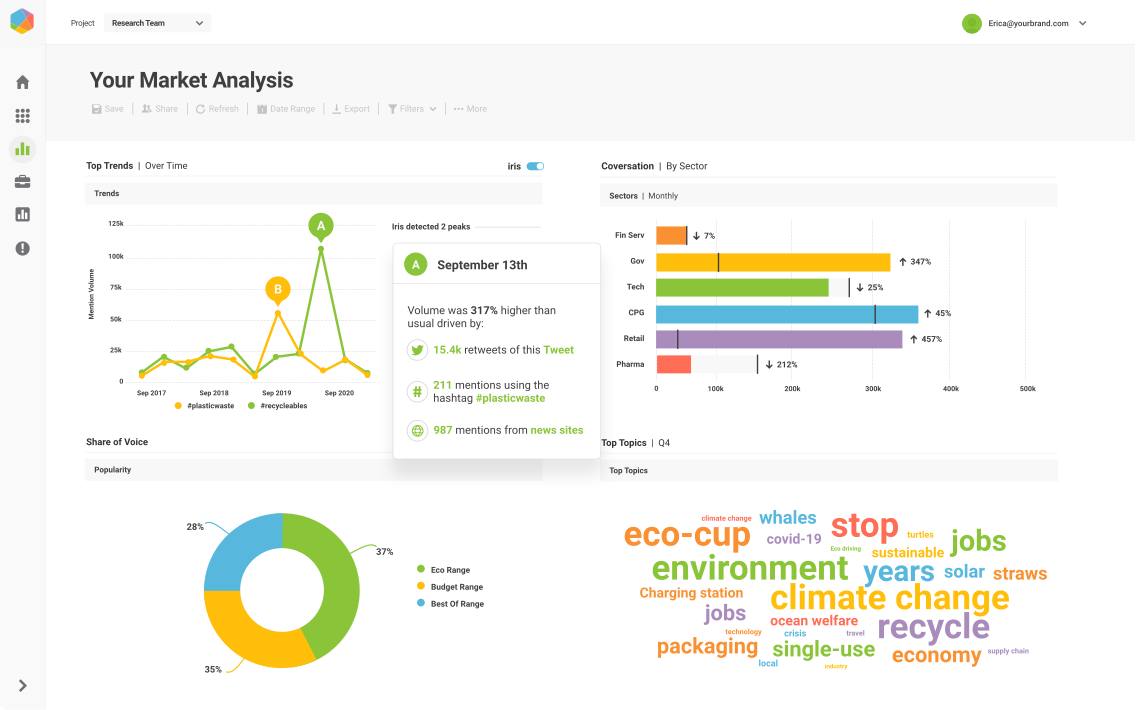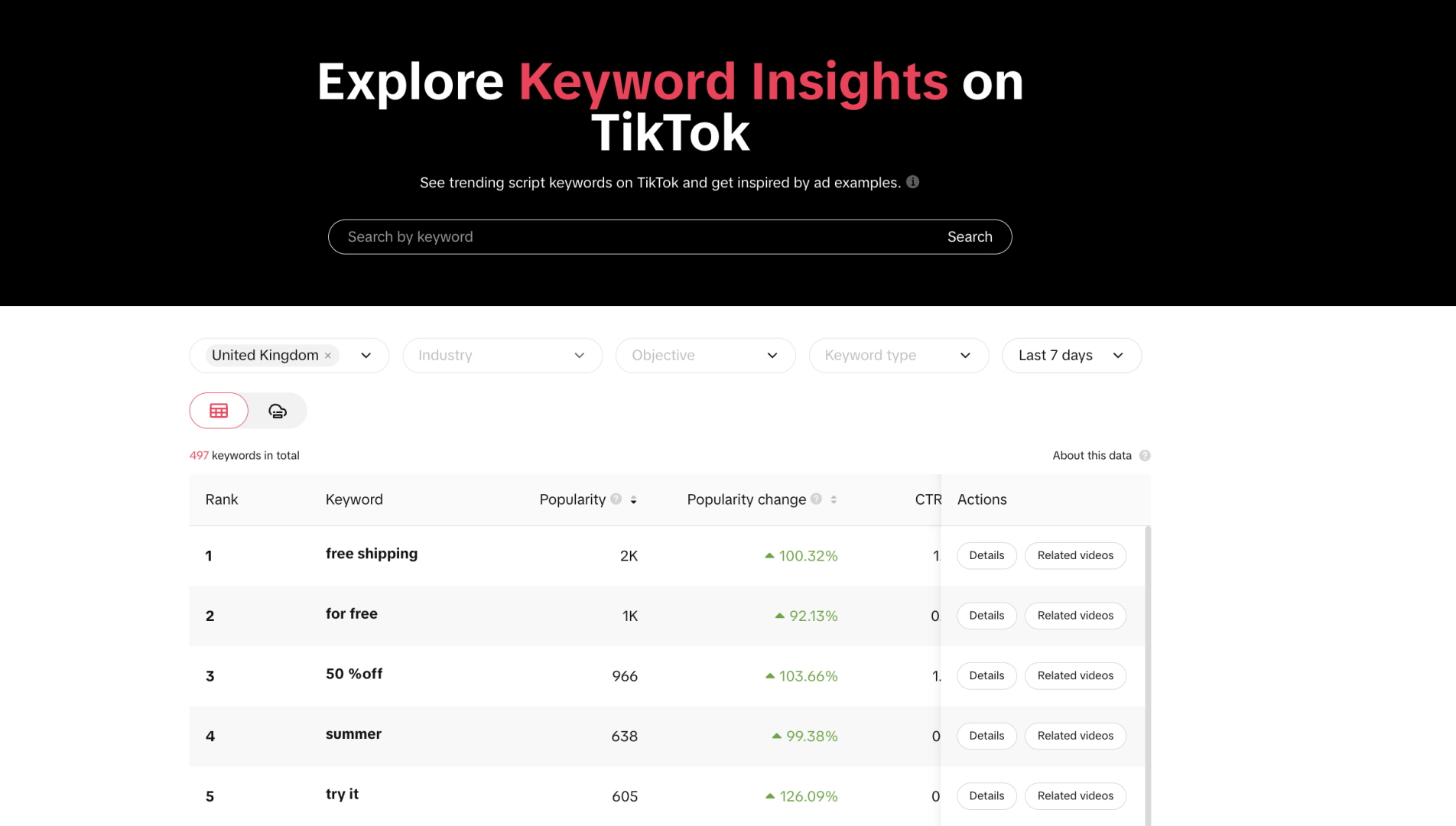Gone are the days of posting polished, branded graphics and hoping for the best. The social landscape has completely evolved, and audiences are craving more unique experiences from brands. Social is no longer a nice-to-have marketing tool, it’s a results-driving, sales-driving channel which shouldn’t be overlooked.
Data has become increasingly important within the realm of social media, helping marketeers like us crucially understand the performance of our content. And, we’re talking measurement beyond the likes and shares, too. Real results, in the form of sales, brand uplift, and more.
We believe data makes social truly effective, and here’s how we use it to achieve better results on social.
Identify your audience
If you know your audience well enough, you’ll know how to engage with them effectively. Data is key to ensuring decisions are made bast on fact, not judgment.
- Analyse your current audience: On-platform tools are great for this as they are packed with first-party data on age, gender, location and interests of your followers. This will help you understand how your content resonates, and if you’re facing any potential challenges in reaching a certain demographic.
- Do your research: Pair information on your audiences with desk research around their behaviours, motivations, media use, interests and barriers, and you’re left with a whole host of options to experiment with in your social content.
- Onboard a social listening tool: We use intelligent social listening tool, Brandwatch, to further understand our clients’ brands and industries, providing a more detailed layer of information on audience sentiment, interests and even lookalike audiences.

Create content that sticks
Data can guide your content strategy, ensuring everything you post is engaging, relevant and shareable.
- Analyse past performance: Scour your previous posts to see if there’s a common thread in what performs well. Metrics like comments, shares and sentiment are key here.
- Jump on trends: If you can, onboard a tool that analyses real-time data to understand how talkable a topic is, and when to newsjack. Aside from that, spending time in your brand’s feeds and FYPs will also really help understand what’s topical in their world.
- Create unique, social-first content: Avoid cross-posting assets made for other channels. Everything you post should be bespoke, made exclusively for social, add value to the user, and be on-brand.
- Leverage UGC: If you’re struggling for unique imagery, look through your mentions and tags. UGC is very authentic and drives high engagement, so include it throughout your content plans.
Maximise opportunities to see
Data is powerful when it comes to influencing the performance of your content. Whether it’s formats, timings, video length – the data is all there somewhere, helping you identify the key to success.
- Post at optimum times. Use analytics tools to determine when your audience is most active, and schedule posts around these peak times to increase visibility.
- Include relevant hashtags and keywords. Research popular and best-performing hashtags and keywords in your industry, helping extend your reach to a broader audience. If you haven’t used it yet, check out TikTok’s Keyword Insights tool to get inspired.
- Engage with your community. Spending time in your community is key. Proactively engage with relevant audiences, reactively respond to commends or DMs, and generally show appreciation. It goes a long way and helps with brand loyalty.
- Collaborate with influencers. Boost your credibility by using talent as a mouthpiece for the brand. Look at data on their followers to check that talent reaches audiences you want to reach, too.

Measure success (and do it all over again)
Analysing social performance is almost the most important part. It brings you full circle to understanding what works, and what doesn’t, allowing you to continuously refine your strategy and improve results.
- Set clear KPIs. Set realistic and timely goals that align with your social media activity. This could be reaching a certain number of engagements per month, or it could be getting an earned mention from an influencer. Think about what good looks like for you specifically, and where you want to be.
- Track key metrics. Track as many metrics as you can, whether you think they’re relevant now or not. Using Brandwatch, we track over 50 metrics, helping us understand potential new ways-in for our clients to succeed. We report on these in whatever format that works for our clients and their stakeholders – be it weekly, monthly, quarterly, annually.
- Adjust your social media strategy. Regularly analyse performance to identify patterns and spot trends. Do this in real-time when campaigns are running; experiment with new content types; learn from the data; incorporate changes to continuously make your future content more effective.
What’s next?
As the social landscape is ever evolving, it’s important to continuously learn and pivot, to stay ahead of the curve (as much as you possibly can, anyway!). To give yourself the best chances, we recommend you…
- Stay abreast of social trends. Follow industry news, spend time in your clients’ communities and get to know what’s topical in your space.
- Consider investing in advanced social tools. As your social presence grows, think about how you can streamline your efforts and package up data to help guide you.
- Focus on quality over quantity. Think about how you add value to your audience – and this can be quantified through data by looking at social performance.
- Test and learn. Explore emerging platforms, test new content types. Staying still won’t get you to where you need to be, as the landscape changes all the time. Being an early adopter could give you a competitive edge!
In conclusion
By using data to influence your social media decisions, you’re maximising your opportunities to improve performance in the long run. Remember, effective social is a marathon, not a sprint – so keep analysing, learning and changing up your approach to give yourself the best chance of success.
If you’d like to chat to a Strategist about your brand’s challenges on social, get in touch today.